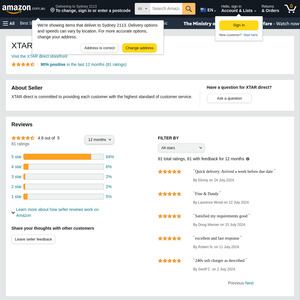Fast charging lightweight cells. I haven't used any 1.5V Li AA batteries before, they might require a special charger but I'm not sure (in the current deal the charger is only $7 more than the 4 cells on their own). I also watched a video where they can cause radio interference with RC gear but that doesn't worry me. My use case is for devices that don't run well / or at all with the 1.2V put out by NiMH batteries and where I don't want to risk leaking alkaline batteries ruining expensive gear.
ATL according to the camels. Even if they are turn out to be superior, it'd be hard to justify replacing all my eneloops - as with many OzBargainer's, I am heavily committed in that regard.



 CamelCamelCamel
CamelCamelCamel

Oh that's sneaky marketing using uncommon units
Capacity: 4150mWh(approx. 2500mAh)